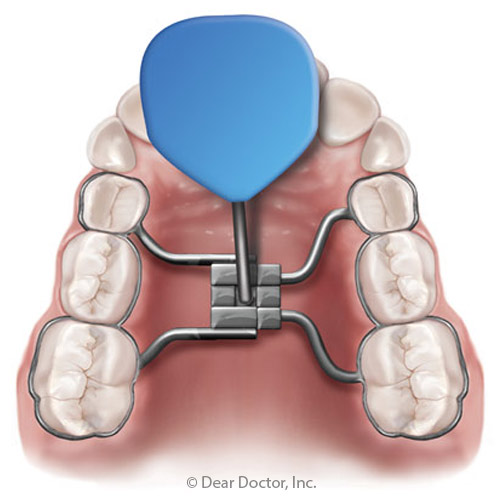Posted in Orthodontics, Pediatric Dentistry

Orthodontists don’t just reposition crooked teeth, they can also treat aspects of facial growth and jaw development to create a more aesthetic and functional bite. The palatal expander is an appliance they can use to achieve this. It gently widens the upper jaw and palate (roof of the mouth) — collectively called the maxilla — to prevent, correct, or reduce the severity of problems associated with an upper jaw that’s too narrow.
The key to this device’s effectiveness is timing… Unlike braces, which can work at any age, the palatal expander capitalizes on anatomical facial changes related to growth. The palatal bone tissue has a growth plate down the center and allows for expansion as the child grows. This stops around puberty and thus is effective for only a limited time.
Problems that may be treatable with palatal expansion include:
Posterior Crossbite. Upper teeth normally close around the outside of the lower teeth. In individuals with a narrow palate, the back upper teeth bite inside the lower teeth.
Tooth Crowding. When there is insufficient space in the jaw, permanent, or adult, teeth cannot erupt into their proper positions. Palatal expansion makes room for crowded teeth to align better, which may eliminate the need for teeth to be removed, or reduce the number that have to come out.
Impacted Teeth. Tooth crowding can block teeth that haven’t come in yet from “erupting” into the mouth.
Breathing Problems. A high palate and narrow arch may cause breathing problems by restricting air passages.
Palatal expansion also can broaden the smile in an aesthetically pleasing way. And while it may not eliminate the need for your child to wear orthodontic braces, it can shorten the length of treatment.
How Does It Work?
To understand how the device works, it helps to understand some anatomy… The maxilla is formed from two bones that fuse together in the middle of the palate at the “midline suture.” These bones are not completely fused until a little after puberty.
To understand how the device works, it helps to understand some anatomy… The maxilla is formed from two bones that fuse together in the middle of the palate at the “midline suture.” These bones are not completely fused until a little after puberty.
The appliance is referred to as a palatal expander and it attaches to the inside of upper molars on each side of the mouth. It has two halves that are connected in the middle with a screw. Slightly turning the screw open each day causes tension at the midlines suture, prompting the bones to gradually move apart and new bone to form in the gap. Once the desired expansion has been achieved, the appliance remains in place to allow the new bone to stabilize. Palatal expanders are typically worn for 3 to 6 months, depending on the amount of expansion required.
Palatal expansion is not appropriate in every case. A skilled orthodontist can help you determine whether this treatment would be beneficial for your child.
You can learn more about this subject by reading our article on “Palatal Expanders.”
No comments:
Post a Comment